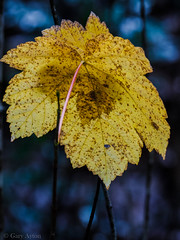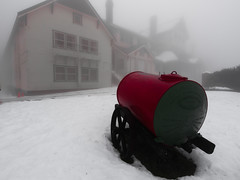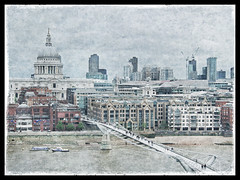Panasonic has made what would appear to be the best lens for the street photographer in their newly released Lumix 20mm f/1.7 pancake lens.

The superb test results published on dpreview.com suggest that this lens will become a legend – sharp even wide open, but especially at f/2.8-4.0, superb flare control, and good distortion and CA qualities for a pancake lens which can be largely mitigated through in-camera or software correction.
While the Panasonic 14-140mm HD lens for Micro Four Thirds is the lens for HD video work with its unique capability of continuous AF during HD video, silent AF, stepless aperture capability, and it’s 10x zoom makes it an extremely versatile travel/hiking lens, it is not a light, compact lens and does not offer much in the way special characteristics for either low light work, street photography or portraiture.
See here for some more nice hiking pics with the 14-140mm lens – very nice, but not my photos.
Until the release of the 20mm f/1.7 lens, MFT users had to consider using either the superb, expensive, somewhat heavy and bulky Four Thirds lens, the Panasonic Leica-D 25mm f/1.4 – a superb lens and better for portraiture and low light work than the 20mm but you pay for it in money and bulk.

An advantage of the Panaleica 25mm is that at f/1.4 instead of f/1.7 you get better low light capability and, in combination with the slightly longer focal length and wider aperture, you get shallower depth of field for the same subject magnification, and thus it is a better portrait lens, although still somewhat wide for a portrait lens.
At a subject distance of 3m, depth of field wide open on the 20mm is approximately twice that of the 25mm lens (1.2m vs 0.6m), however, to get same subject magnification, one would have to move in closer with the 20mm and thus the difference will not be quite as much, but you would also get a wider background area with the 20mm which may or may not be desirable.
The 25mm lens will need a rather expensive Four Thirds-Micro Four Thirds adapter to allow use on a MFT camera, and the firmware update to gain AF on MFT cameras, but has the advantage it can also be used on Four Thirds cameras whereas the 20mm cannot be used on FT.
The alternatives are the multitude of lenses from other manufacturers such as Nikon, Canon, Sony, Minolta, Pentax, Leica R, Leica M, Carl Zeiss Contax, Olympus OM which require manual focus only, an adapter, and are not optimised for digital sensors but generally offer an aperture ring which is quite handy indeed in street photography, and of course, many are available cheaply on Ebay, although there are not so many options for a wide aperture 20-25mm lens as most are f/2.8-3.5.
Although I own the PanaLeica 25mm f/1.4 lens and absolutely love it, the Panasonic 20mm f/1.7 MFT lens is looking like it will be high on my wish list to add to my tools and may replace my lovely Olympus OM 21mm f/3.5 lens which I use for day time street photography with the Panasonic GH-1.
Of course, Olympus micro four thirds camera bodies would take the capabilities of the 20mm f/1.7 lens even further in low light by adding in-camera image stabilisation.
An Olympus E-P1 with Panasonic 20mm f/1.7 lens would make a brilliant street photography kit, and I look forward to what new cameras Olympus and Panasonic will be bringing out over the next couple of years in Micro Four Thirds – fun times indeed.
Camera bodies come and go but great lenses will last many, many years and thus depreciate less rapidly.
Similar lenses which will AF on MFT include:
- Olympus 17mm f/2.8 – perfect angle of view and size for street photography and travel but image quality is not as good as the 20mm although much cheaper and aimed at the consumer end to bring some much needed affordability to the market. See comparison sharpness tests here.
- Panasonic 14mm f/2.8 pancake – coming in 2010 to give a 28mm angle of view option
- Panasonic 30mm f/1.4 OIS – rumoured for 2011?
So start saving your money, the 20mm f/1.7 is not exactly a cheap consumer lens despite its tiny size.
| Panasonic 20mm f/1.7 MFT lens | Panasonic Leica-D Summilux 25mm f/1.4 FT lens | |
| RRP | $US399 | $US999 |
| depth of field at widest aperture at 3m | 1.2m | 0.6m |
| diaphragm | 7 bladed circular | 7 bladed circular |
| aperture ring | no | yes (but only works on Panasonic bodies) |
| closest focus | 0.2m (0.66ft) | 0.38m (15 inches) |
| macro magnification | 0.13x (0.25x in 35mm terms) | 0.09x (0.17 in 35mm terms) |
| angle of view in 35mm camera focal length equivalence | 40mm (57deg) | 50mm (47deg) |
| filter size | 46mm | 62mm |
| length | 1 inch | 3.06 inches |
| weight | 0.96 lbs | |
| best for | street photography, macro, compact needs / travel | low light, shallow DOF, portrait |











Why not mention the Sigma 30mm f1.4 that I use? It’s very seldom mentioned when Oly people speak about low light/portrait lenses forthe fourthirds/mft cameras.
ah, yes, I forgot that one, but I am guessing it won’t AF on MFT?
True. And it is bulky.
Gary,
Just to clarify, the Sigma 30mm f1.4 does AF on the Pen E-P1. It is a tad slower than the MZ 14-42 MFT zoom lens but will lock on in all but the most dismal of conditions. It produces the doughnut green ring AF confirm not the solid green circle. But I agree, it’s big!
Hi John, forgot the Olympus E-P1 will AF with most Four Thirds lenses (albeit slowly) whereas Panasonic will only AF with the contrast detect enabled lenses.
Any links to portraits with Sigma 30mm f/1.4 wide open?